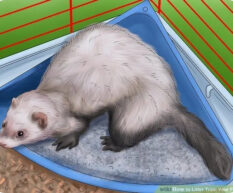Ferret News
Ferret Housing Guide
By Jazmin "Sunny" Murphy
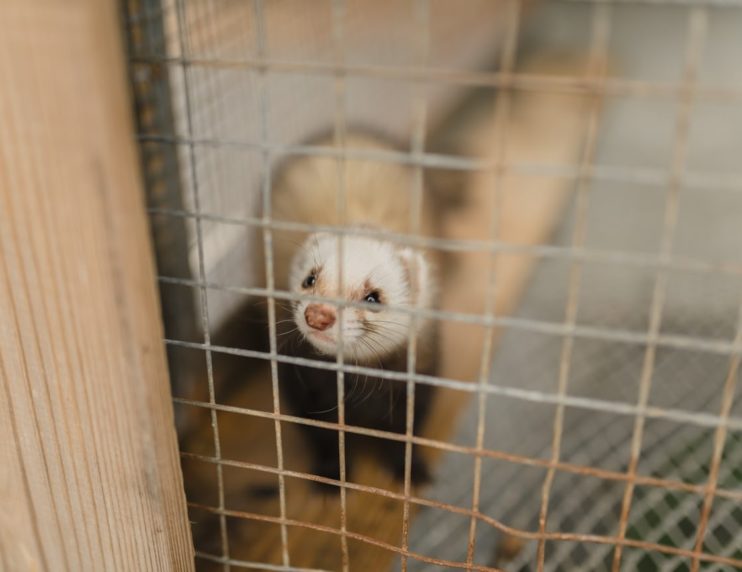
Ferrets’ houses are critical to their health and safety. It’s where they take shelter throughout the day and night (when these animals are not getting their required daily exercise, of course), so you must ensure it’s as secure as possible. Here are some of the most important information to know about housing your ferret.
How Do You House a Ferret?
Ferrets are wily little critters that need to have a secure home to keep them safe and out of trouble. Typically, ferret owners tend to go for cages as the most secure paddock. In these, you won’t have to keep a constant eye on your ferret or worry about their inquisitive nature getting the best of these animals, leading to sneaky escapes.
At the same time, in an appropriately-sized cage, your ferret can still entertain itself while you’re away or sleeping. There should be enough space for it to scuttle about its canopy just as comfortably as it would around its environment.
One of the most important things to keep in mind when housing a ferret is its features and inclination to chew and gnaw on things. If it has too much pent-up energy, the ferret is liable to try and bite its way out of the paddock in an attempt to get out and play. With this in mind, you must choose a durable material to prevent your ferret from getting out.
Additionally, you’ll need to consider the number of ferrets you’re housing. Further, can two male ferrets live together? Surprisingly, yes! Males tend to get along better than females, but only when introduced to these animals gradually and carefully. No matter the ferrets’ sexes or types, though, make sure they are all comfortable in the cage with adequate sleeping, feeding, and potty space.
There are numerous factors to evaluate about a specific canopy type before you commit to cage your ferret inside it. While some of these come down to preference, there are a handful of non-negotiable elements, as they strongly influence your ferret’s health and wellbeing.
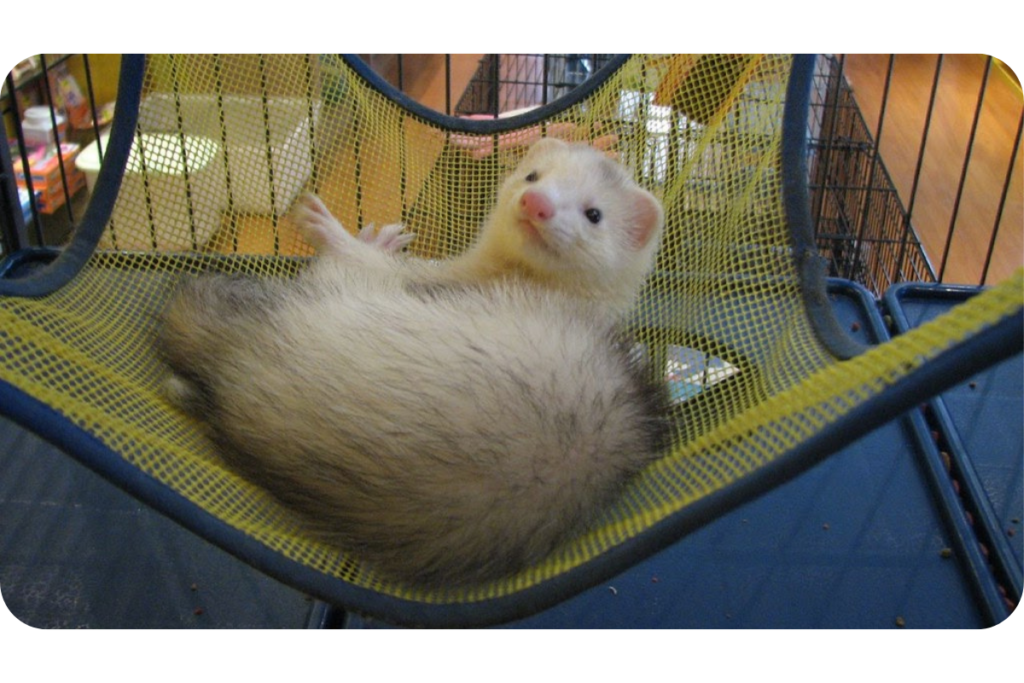
Most Important Traits of Ferret Housing
All the above points considered, here are some of the most critical standards your chosen ferret caging should meet:
- A ferret’s cage should be at least 60 x 60 x 45 cm. There should be enough room inside for bedding, exercise, feeding, and a litter box. Your ferret should not be cramped or uncomfortable when lying, sitting, or moving around in its canopy.
- The cage should be metal, not hard plastic or a similar material. Recall that ferrets are inclined to chew on things. That said, there’s a good chance your ferret might destroy anything less durable products than metal quite easily.
- Note: Not only is metal the best assurance that your ferret will stay enclosed, but it will also prevent them from ingesting any harmful materials as they attempt to escape.
- Their canopy should be well-ventilated. For this reason, glass enclosures (i.e., terrariums) are not good ferret homes. This cage dramatically increases the risk of your ferret overheating or inhaling excessive ammonia since there is no airflow to release the gases expelled by decaying waste that you may not have removed yet.
- Note: This is yet another reason why metal wire ferret cages are the safest option to cage your ferrets. It allows for better body temperature and air quality regulation, a critical factor, given that ferrets can’t typically handle temperatures over 32°C.
No matter what material or cage dimensions you choose, it’s best to ensure that your ferret is potty trained as soon as possible. These pets like to relieve themselves in corners, so there’s a risk that their waste will get trapped in hard-to-reach spots without proper training. Providing a litter box with shredded paper (not cat litter!) will help prevent this issue.
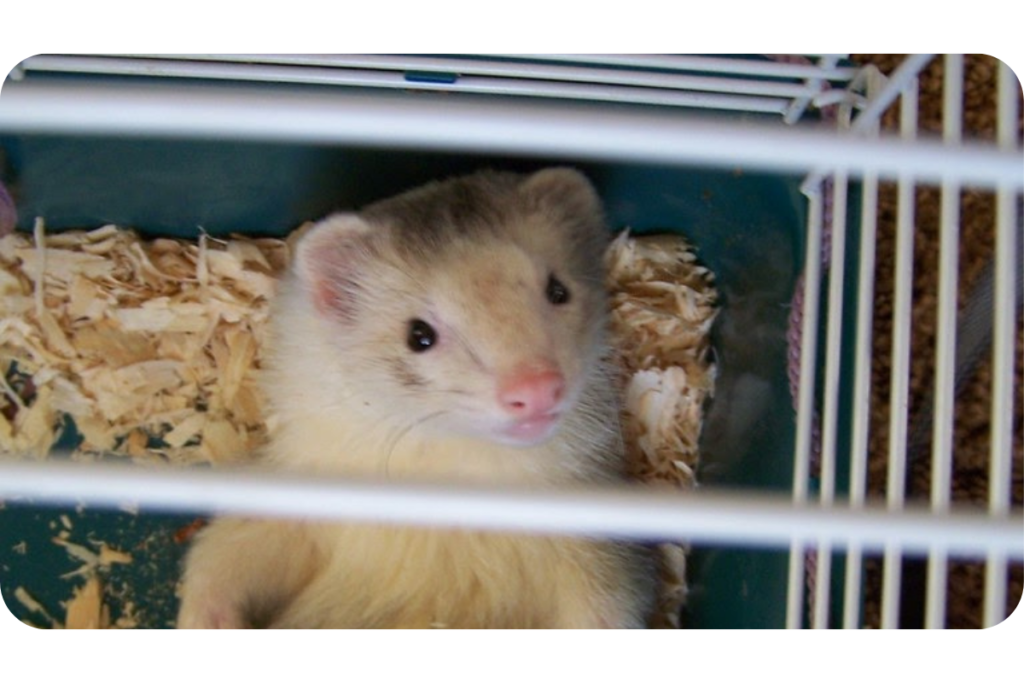
Can Ferrets Be Left Alone in the House?
You may not be so keen on keeping your fur-baby in a cage. This is normal, as many ferret owners like to give their little buddies a bit more room than even the largest ferret environment can provide. That’s why you might have found yourself occasionally wondering, “Can ferrets roam the homestead?”
The short answer is no. Veterinarians generally advise against leaving ferrets alone in their environment because of how easily they can get injured. From falling off tall furniture to getting lodged behind appliances, there are far too many household items that can trap or entangle your ferrets to justify letting them alone in the home for lengthy periods.
Still, there are exceptions for those persistent in asking, “Can ferret run free in a house?” If you know your ferret very well and are confident that it will not get into any mischief without supervision, then you may be in a better position to leave it alone at homestead than most other ferret owners.
Even if this is true for you, you must ensure that you ferret-proof your homestead before leaving it alone. Here are a few tips on how to do that:
- Block the undersides, vents, and openings of all appliances.
- Block access to the openings under door frames.
- Do not allow the ferret anywhere near furniture like mechanical reclining chairs (the closing mechanism can trap the ferret, leading to severe injuries) and rocking chairs.
- Remove vulnerable decors such as couch cushions or pillows.
- Pick up attractive items from the ground (i.e., erasers, paper clips, etc.)
- Secure all medications and toxic food items in areas where your ferrets cannot access them.
- Cover all electrical wires.

Can Ferrets Fit Under Doors?
Generally, a good rule to follow is: If your ferret’s head can fit, the rest of its body can fit. Have you ever caught your ferrets poking its head somewhere it doesn’t belong? If so, it’s a good idea to block this place off if you ever plan on leaving your ferrets alone in their environment.
Even if you’ve never caught your fur-baby red-handed, you’d be surprised at what ferrets can squeeze themselves into. Usually, when your ferrets move around above-ground, they keep their back hunched, making them look much bigger and perhaps, less flexible than they are.
However, when they squeeze underneath an obstacle, they straighten out that back and fully extend the spine (making their body 30% longer), bringing their body low to the ground and enabling them to squeeze into stunningly small ranges.
This is possible thanks to their unique spine. In other animals, the spine has parts called “processes” that extend outward from the body. These prevent the spine from hyperextending, limiting its flexibility. Ferrets have significantly thinner processes, so their spines can bend much more extensively than other organisms.
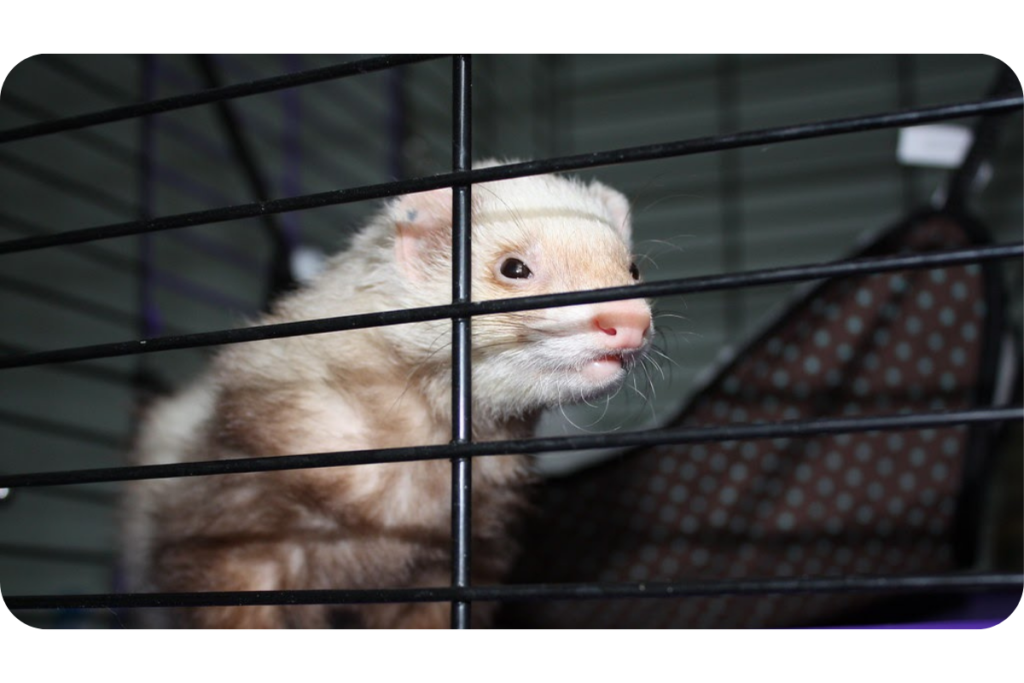
How Do You Proof a Ferret House?
Remember that the environment isn’t the only thing that needs to be ferret-proofed. As mentioned earlier, ferrets are very likely to try and get out of their homestead, even if they’re happy and well-exercised. Because of this, you’ll need to make sure the enclosure can stand up to its antics. Here are some issues to prioritize when proofing your ferret cage:
- Make sure your ferrets cannot get tangled in their toys. Rope toys are fun to play with for your ferrets, but if they’re too narrow, the ferrets could become entangled and lead to choking or bodily injuries.
- Ensure that all the cage platforms are structurally sound and that your ferrets cannot fall from them and hurt themselves. (This means that there should be enough platforms that your ferrets can’t fall too far and get injured.)
- Double-check that their food and water bowls are secure. Having a secure water bowl is especially important since an accidental spill on their paper bedding or food could lead to bacterial growth if it’s not cleaned up.
- Of course, you need to ensure that your ferrets cannot escape from their cage. This means that you should ensure that the wire spacing is not too wide (so they can’t squeeze through) and that your ferrets can’t open any of the doors.
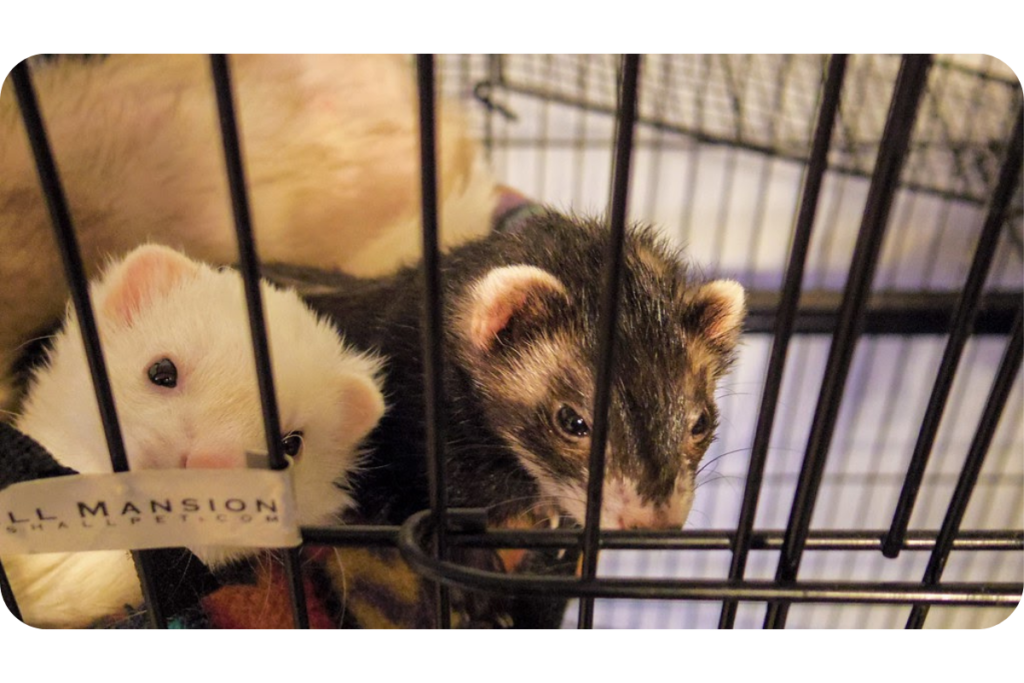
Do Ferrets Need a Lot of Space?
These escape artists do require quite a lot of room both in and out of their ferret homestead. In addition to the cage dimensions described above, you’ll also want to take your ferrets out of their cage for at least four hours daily for exercise. If you’re going to keep your ferrets indoors, provide them with the largest possible area in their homestead for playtime while minding their safety.
For those who want their ferrets to get some fresh air outside, consider lead-training. These animals will most certainly love to walk around outdoors, feeling the breeze and hearing the birds. For times when you don’t want to walk your pet or don’t have the time, consider an outdoor cage and housing ferrets.
Caging these escape artists outside is more typical for owners in the United Kingdom since the climate makes it more comfortable for them to live outdoors instead of inside. Even if you don’t live in the UK, you might still be interested in this cage style. If so, just make sure that you consider the rest of the potential risks of keeping them in such settings:
- Know the weather conditions to avoid exposing your pet to extreme temperatures.
- Watch out for predators. If you live somewhere like Australia, there are lots of creatures to be mindful of, such as snakes. Fortify their cage to keep them safe.
- Make sure your pet can’t escape. This is greatly important when your pet ferrets are outdoors. If it gets out, there are a lot of dangers outdoors than in the ferret’s homestead.
Wrap-Up: Housing Your Ferret Safely and Securely
Housing this specific pet is much simpler than most new owners might expect. Just stick to the minimum cage size and adjust upward the more ferrets you intend to place in the cage. Make sure to let them out for at least four hours daily, and give them safe access to toys, food, and water, and your pet ferrets will be the happiest little critter in the world.

